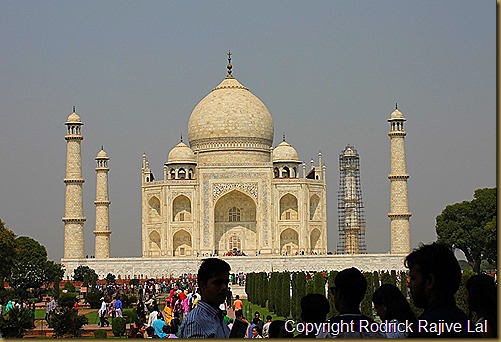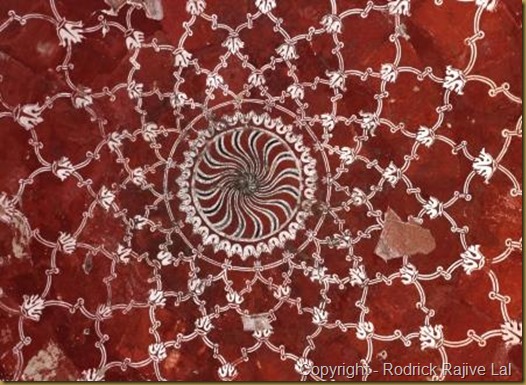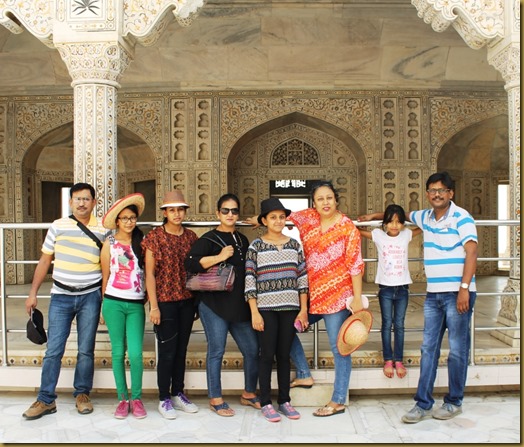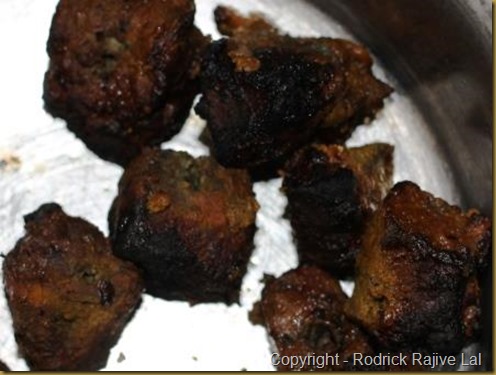"Happy are they, in my opinion, to whom it is given either to do something worth writing about or to write something worth reading; most happy, of course, those who do both." Pliny the Younger-Letter to the historian Tacitus. C. AD 106
Saturday 31 October 2015
Sunday 25 October 2015
Agra, a Treasure - Trove of Mughal Architecture and Art
When we were invited to my niece’s wedding by my cousin brother in Agra, I thought it would be a good opportunity to also take the opportunity to visit some of the Mogul monuments in the town. I was particularly interested in testing the Canon 40 mm f-2.8 prime lens that I had recently purchased to go with my 1100 D Canon DSLR Camera. Besides the prime lens I also used my 18-55 mm f-4.6 zoom kit lens for a wider coverage. I was particularly pleased by the sharpness and shallow depth of field that I was able to achieve with the prime lens, although I was limited by the narrow angle of coverage. We left for Agra on the eighteenth of October and returned on the twenty-first. This was a four day trip which included a one day no visit day devoted to the marriage itself. One of the best things about Agra is that you can plan you itinerary in such a way that you cover all the monuments in a sequence. If you are taking the Delhi Mathura highway, then the first monument you can cover is Sikandra. This monument can be visited on the first day of the journey because it is on the highway itself. After spending time in Sikandra ( at least two hours) you could check in at the hotel and then visit some of the U.P. handicraft emporiums. The next day could be spent visiting The Taj Mahal and the Red Fort. Remember to rise early and visit both monuments early in the day so as to beat the heat of the sun. Another word of advice for those who want to take photographs is to carry a lens-hood as shooting into the sun can cause flaring which although sometimes welcome can be at other times irritating! The third and last day of the visit to Agra can be devoted specifically for a visit to Fatehpur Sikri and Jodhabai’s Palace, two adjacent complexes located at a distance of about 38 kilometres from Agra itself.
The grand entrance to Akbar's mausoleum
The town of Agra, located in the state of Uttar Pradesh is a must visit for all those who would like to learn more about Medieval Mughal history. A drive of a little more than two hundred kilometres from New Delhi, Agra’s is home to the world heritage monument, The Taj Mahal. Besides The Taj Mahal, there are a few other important monuments that are a must visit, and these include, Sikandra, which houses the tomb of King Akbar the Great. A tall and imposing complex of gates, the complex is surrounded with green lawns which are inhabited by deer, The Red Fort, Fatehpur Sikri and Jhodha Bai’s Palace.
In this mausoleum lie the mortal remains of one of the greatest emperors of India,
Akbar the Great!
The Red Fort of Agra is another monument of historical significance . Initially built by King Akbar, his sons Jahangir, Shah Jahan, and Aurangzeb made additions to the structures situated within the boundaries. Built of Red Sand Stone brought from Fatehpur Sikri and other places, As with all the other monuments, one can find in the monument, traces of Persian, Hindu and Western architectural influences.
The Taj Mahal of course is the most significant monument of all, not just because of the fact that is the best know world heritage monument, but also because it is poetry in Marble. Sourced from Makrana in Rajasthan, The Taj Mahal is an expression of Akbar’s love for his departed wife Mumtaz Begum. A Complex of outer gateways and galleys, and the inner monument made out of marble slabs, the Taj Mahal is worth a visit.
The Bulund Darwaza is one of the tallest gateways in India.
Fatehpur Sikri is about 38 kilometres from Agra and it houses at its centre, the Shrine of Salim Chishti, the religious man who prayed for King Akbar that he should get an heir for his throne. Built majorly of red Sandstone, the main entrance to the complex is through the Bullund Darwaza, the highest and tallest of all the gateways in India. The Dargah of Salim Chishthi is visited by people from all over India who have wishes they want to be fulfilled. As such people tie a string around the lattices of the screen inside the shrine and it is their belief that if their thread or string comes undone, then their wish will be fulfilled.
It was here that the emperor and his wives played a game of Pachisi. Seen on the floor are distinct lines marking the squares where women stood in place of counters!
Right next to Fatehpur Sikri is the palace complex of Jodha Bai. While the Fatehpur Sikri is spiritual in nature, the Jodha Bai palace complex is more about the earthly and mundane day to day life of the Mughal Emperor Akbar and his wives. Built in the form of a Rajasthan Haveli or Bungalow, Jodha Bai’s palace complex has an inner courtyard and surrounding buildings that house lining quarters, prayer areas, sleeping quarters, kitchens, entertainment areas and so on.
This is where Akbar held private meetings with his ministers.
Pasted below are a few photographs of various art forms I was able to discover from the monuments I visited:
A couple of friezes at the Taj Mahal
An intricate design on the inside of one of the domes in a building in the Taj Mahal
A glimpse of the intricate design inside the dome of one the buildings inside the Taj Mahal complex
A glimpse of yet another Dome at Fatehpur Sikri near Agra
An intricate pattern on one of the domes in one of the buildings in Sikandra
An intricate pattern on the underside of one of the domes in of one of the buildings in Sikandra
For our trip to Agra we took the Delhi - Faridabad-Mathura road, and not the Yamuna Express way because we were travelling from Gurgaon to Agra. Taking the Delhi - Mathura road was a better option as we would not have to drive all the way to Delhi and the then take the Express way. The Faridabad-Mathura-Agra highway was once touted as one of the best highways but now is riddled with bottlenecks, diversions and construction equipment. Toll collection gate lanes are often congested, and all these obstacles might hamper you if you are driving down to Agra, however we were able to cover the distance from Agra to Gurgaon while returning in exactly four hours having departed from Agra at 5:20 p.m.
An important advice to people driving to Agra would be for them to leave early in the morning at least by 6:00 a.m. or late in the evening by 5:30 p.m. This way they will be able to avoid traffic jams.
Of course that is me behind the counter of one of the shops selling the Panchi Brand of Petha!
Besides its monuments and handicraft items, Agra is famous for its sweets, namely Petha and tasty snacks called Daal Bheeji. The Petha is a Pumpkin that is boiled, dipped in lime water and then cooked in sweet sugar syrup.Panchi Petha is the most sought for brand name for Petha. Agra is also known for its sweet bread known as sheermal and kebabs and tikkas. Agra is famous for its street food and to enjoy it, one will have to step out of the hotel one is staying in and enjoy the huge variety of food that can be found in the markets. It makes me wonder if some of the street food found in Agra might not have been the kind of food that the Moguls might have once enjoyed themselves!
A few more examples of mogul expertise are pasted below. Look for perfect symmetry and mathematical accuracy.
A corridor in one of the buildings in the Red Fort.
A glimpse of Salim Chishti’s Shrine.
Devotees and pilgrims proceeding towards the Dargah of Salim Chishti.
Technorati Tags: A Visit to Agra,a treasure trove of Mogul Architecture
Saturday 24 October 2015
Friday 23 October 2015
Monday 12 October 2015
Friday 9 October 2015
Photographs of some species of birds spotted at the Sultanpur Bird Sanctuary

The Indian Roller Bird might sometimes be confused for a Kingfisher bird, but a closer look at its beak will remove the doubt, because a Kingfisher beak is longer and more pronounced, bigger and red in colour.
Herons are a very common species of birds that you will get to see at the Sultanpur Bird Sanctuary. This one was sitting over a pile of grass set on the ground for the specific purpose of helping these birds to lay their eggs.
At first I thought that this Grey Kestrel was a dove, but then on closer scrutiny, I realised that it was a grey Kestrel!
Flying in Tandem, two different species of birds flying in formation. The bird at the bottom is an Egret while the one above it is a black-necked stork.
Technorati Tags: Birds at The Sultanpur Bird Sanctuary
Monday 5 October 2015
Subscribe to:
Posts (Atom)




































